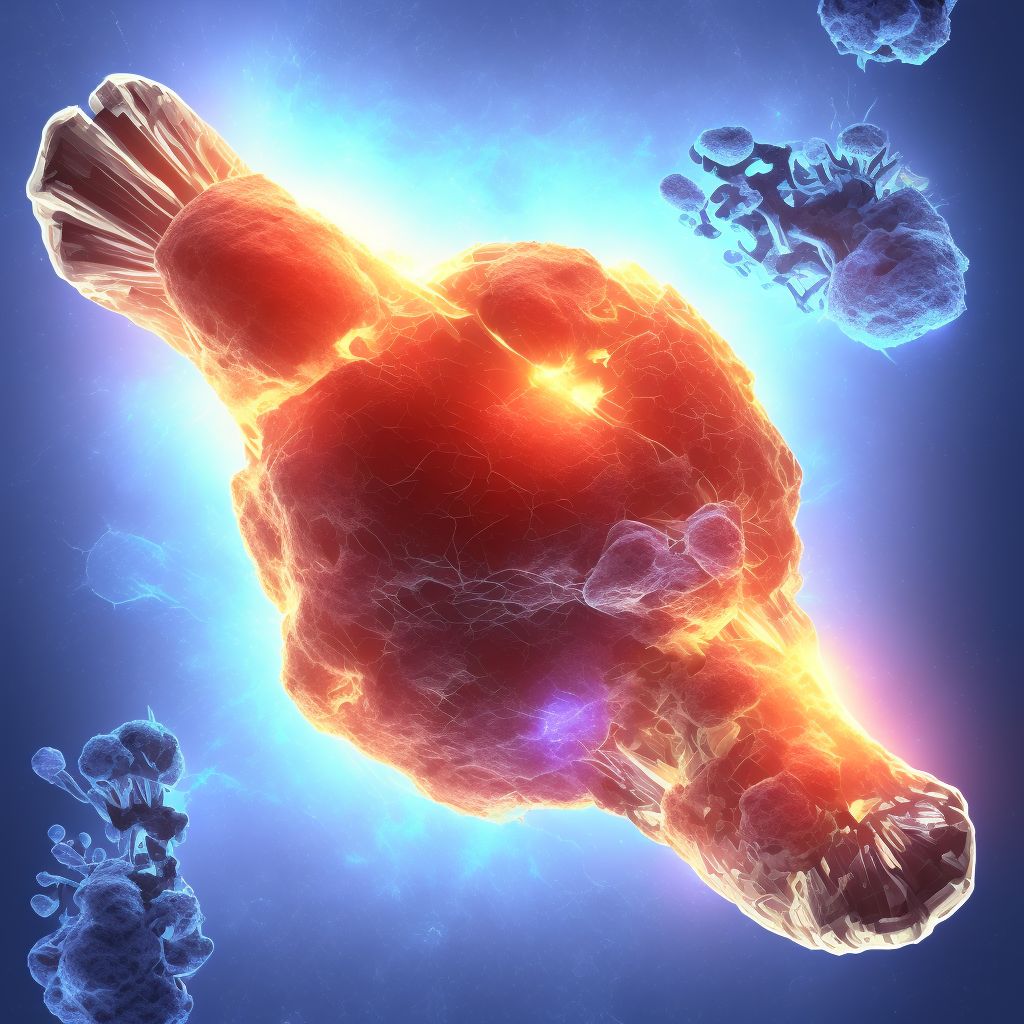
Displaced segmental fracture of shaft of left tibia, subsequent encounter for open fracture type IIIA, IIIB, or IIIC with nonunion Save
ICD-10 code: S82.262N
Disease category: S82.262: Displaced segmental fracture of shaft of left tibia
Displaced Segmental Fracture of the Shaft of Left Tibia: Understanding the Subsequent Encounter for Open Fracture Type IIIA, IIIB, or IIIC with Nonunion
A displaced segmental fracture of the shaft of the left tibia can be a severe injury that requires medical attention. In some cases, these fractures can lead to open fractures, specifically classified as type IIIA, IIIB, or IIIC. Subsequent encounters for such fractures are crucial for proper evaluation and management.
When a fracture is classified as type IIIA, IIIB, or IIIC, it means that the bone has penetrated the skin, resulting in an open wound. These fractures are typically complex and require specialized treatment. However, in this article, we will focus on understanding the subsequent encounter for open fractures of this nature with nonunion, excluding any discussion related to treatment.
- Diagnostic Evaluation: During the subsequent encounter, a thorough diagnostic evaluation will be conducted to assess the healing progress and identify any complications. This may include physical examinations, imaging tests such as X-rays or CT scans, and laboratory investigations.
- Assessment of Nonunion: Nonunion refers to a condition where the fractured bone fails to heal properly. In the case of displaced segmental fractures of the left tibia, assessing nonunion is essential. This assessment involves evaluating the stability of the fracture site, analyzing the presence of any gaps or bone fragments, and determining the extent of callus formation.
- Monitoring Infection: Open fractures are prone to infection due to the exposure of the bone to external contaminants. During subsequent encounters, close monitoring of infection is necessary. This may involve assessing the wound site, checking for signs of inflammation or discharge, and conducting microbiological cultures if required.
- Reviewing Patient History: Understanding the patient's medical history is crucial to evaluate factors that may influence fracture healing. Previous surgeries, medical conditions, and lifestyle habits should be considered during subsequent encounters to gain a comprehensive understanding of the patient's overall health status.
It is important to note that this article does not provide any information about treatment options for displaced segmental fractures of the shaft of the left tibia with nonunion. Treatment decisions should be made in consultation with a qualified healthcare professional based on the individual patient's condition and medical history.
In conclusion, subsequent encounters for open fractures of the tibia shaft with nonunion require a comprehensive diagnostic evaluation, assessment of nonunion, monitoring for infection, and reviewing the patient's medical history. These steps help medical professionals in managing and determining the appropriate treatment for this complex fracture.
Treatment of Displaced segmental fracture of shaft of left tibia, subsequent encounter for open fracture type IIIA, IIIB, or IIIC with nonunion:
Treatment Options for Displaced Segmental Fracture of Shaft of Left Tibia
A displaced segmental fracture of the shaft of the left tibia is a severe injury that requires immediate medical attention and appropriate treatment. This type of fracture is often associated with open fractures of types IIIA, IIIB, or IIIC, which further complicates the situation. In cases where the fracture...
To see full information about treatment please Sign up or Log in